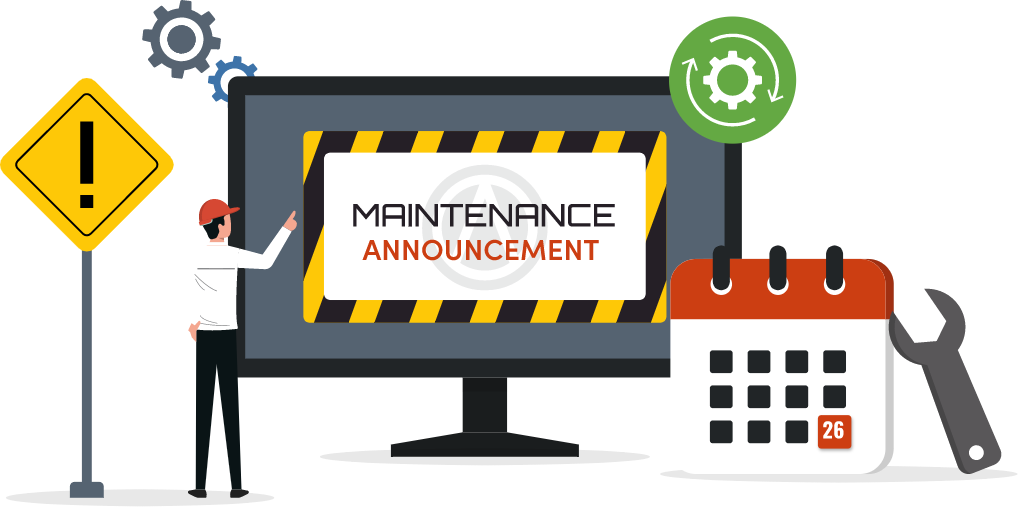What are the benefits of AI in business process automation?
AI in Business Process Automation enhances efficiency, reduces errors, lowers costs, improves decision-making, and streamlines operations across various industries.
The Role of AI in Business Process Automation
Overview
In an era defined by rapid technological advancements, Artificial Intelligence (AI) has emerged as a transformative force across industries. One of its most impactful applications is in Business Process Automation (BPA). By combining the power of AI with automation, businesses can achieve unprecedented levels of efficiency, accuracy, and scalability.
Here's a deep dive into the role of AI in business process automation and why it's a game changer for organizations of all sizes.
What is AI-Powered Business Process Automation?

Traditional automation relies on predefined rules and workflows to streamline repetitive tasks. While effective, it often lacks the flexibility to handle complex or unstructured processes.
AI-powered BPA takes automation to the next level by introducing capabilities like -
1. Machine Learning (ML) - Systems that learn and improve over time.
2. Natural Language Processing (NLP) - Understanding and generating human language.
3. Computer Vision - Interpreting visual data such as images and videos.
4. Predictive Analytics - Forecasting trends and outcomes based on historical data.
These technologies enable AI-driven systems to adapt, make decisions, and perform tasks that previously required human intervention.
Take Control of Your Operations Team's Tasks
Discover Seamless Workflow Management with Altametrics
Key Applications of AI in Business Process Automation
1. Customer Service and Support
AI-powered chatbots and virtual assistants have revolutionized customer interactions by -
-Handling inquiries 24/7.
-Understanding natural language and providing accurate responses.
-Escalating complex issues to human agents only when necessary.
Impact - Faster response times, improved customer satisfaction, and reduced support costs.
2. Data Processing and Analysis
AI automates the collection, organization, and analysis of large datasets. This is particularly useful for -
-Extracting insights from unstructured data like emails, social media posts, or scanned documents.
-Identifying patterns and trends in real-time.
-Accelerated decision-making and more accurate forecasts.
Impact - Accelerated decision-making and more accurate forecasts.
3. HR and Recruitment
AI streamlines HR processes by -
-Screening resumes for relevant qualifications.
-Analyzing candidate profiles using predictive algorithms.
-Automating employee onboarding workflows.
Impact - Reduced time-to-hire and improved employee retention through better candidate matching.
4. Finance and Accounting
AI enhances financial operations by -
-Automating invoice processing and payment approvals.
-Detecting anomalies and potential fraud in financial transactions.
-Generating financial reports with predictive insights.
Impact - Increased accuracy, reduced risk, and faster financial operations.
5. Supply Chain Management
AI optimizes supply chain processes by -
-Predicting demand fluctuations.
-Identifying bottlenecks in logistics.
-Automating inventory management.
Impact - Reduced operational costs and improved supply chain efficiency.
Benefits of AI in Business Process Automation
1. Enhanced Efficiency
AI automates complex workflows, reducing the time spent on repetitive or manual tasks and allowing employees to focus on strategic activities.
2. Improved Accuracy
AI systems minimize human errors, ensuring consistent results across processes like data entry, financial analysis, and quality control.
3. Scalability
AI-powered automation scales effortlessly with business growth, handling increasing workloads without compromising performance.
4. Cost Savings
By automating tasks traditionally performed by humans, AI reduces labor costs and optimizes resource utilization.
5. Personalization
AI enables businesses to deliver personalized experiences, from customer service to marketing, by analyzing individual preferences and behaviors.
Challenges and Considerations

While AI in BPA offers immense benefits, businesses must address the following challenges-
1. Implementation Costs - Initial setup can be expensive, particularly for small businesses.
2. Data Privacy - Ensuring compliance with regulations like GDPR and CCPA is crucial.
3. Change Management - Employees may need training to adapt to AI-driven workflows.
4. Ethical Concerns - Transparency and accountability in AI decision-making must be prioritized.
Achieve More with Less Hassle!
Integrate, Manage, and Drive Results with Altametrics
The Future of AI in Business Process Automation
The integration of AI in BPA is still evolving, and the future holds exciting possibilities -
1. Hyperautomation - A combination of AI, machine learning, and robotic process automation (RPA) for end-to-end automation.
2. Real-Time Decision-Making - AI systems that respond instantly to changes in market conditions or business operations.
3. Industry-Specific Applications - Tailored AI solutions for healthcare, retail, manufacturing, and more.
As AI technology advances, businesses that embrace it early will gain a competitive edge, driving innovation and profitability.
Conclusion
AI-powered business process automation represents more than just technological advancement it's a fundamental shift in how organizations operate. While challenges exist, the benefits far outweigh the obstacles. As AI technology continues to evolve, its role in business automation will only grow more significant. Organizations that embrace this change thoughtfully and strategically position themselves for success in an increasingly competitive global market.
The key lies not in viewing AI automation as a replacement for human workers, but as a powerful tool that enhances human capabilities and drives business innovation. As we move forward, the organizations that best balance artificial and human intelligence will be the ones that thrive in the digital age.

Process Your Invoices and Make Payments to Vendors
Automate, Integrate, Dominate with Altametrics



Top Inventory Management Strategies for Restaurants

Food Safety Standards Every Restaurant Owner Must Know in 2025

How to Build a Restaurant Inventory Management Process from Scratch


The Complete Guide to Restaurant Waste Management for Owners


5 Signs Your Hotel Needs to Upgrade Its Payment Processing System

The Ultimate Daily Checklist for Restaurant Owners

Are You Over-complicating Your Restaurants Payroll Process?


How Can Smart Scheduling Transform Your Restaurant's Efficiency?

What Are the Best Email Marketing Campaign Ideas for Restaurants in 2025?

How Can You Maintain Brand Consistency Across Multiple Franchise Locations?

How Can Restaurants Prevent Scheduling Conflicts and Last-Minute Absences?

What's the Most Efficient Way to Manage Tasks in a Busy Restaurant?

What Should You Look for When Interviewing Restaurant Staff?

What Is a Dram Shop Law and How Does It Affect Your Restaurant?

What Features Should Every Restaurant Ordering System Have in 2025?

What Are the Most Cost-Effective Ways to Reduce Waste in a Restaurant?

Are Your Menu Items Costing You More Than They're Worth?

How Do You Handle Overtime and Tip Credit in Restaurant Payroll?

Are You Spending Too Much Time on Payroll? Here's How to Fix it

How Can I Implement an Effective Inventory Management System in my Restaurant?


What Are the Main Inventory Costing Methods for Restaurants?


How to Optimize Order Fulfillment in Your Restaurant

How to Design an Effective Employee Training Program for Restaurants

9 Essential Workforce Management Tools Every Restaurant Needs

How to Read and Use Your Restaurants Profit and Loss Statement

How to Organize Your Restaurant's Financial Records Efficiently

Restaurant Billing 101 - Simplify Your Finances and Boost Efficiency

The Ultimate Guide to Accounts Payable Automation for Restaurant Owners

Benefits of Accounts Receivable Automation for Restaurants


Restaurant Bookkeeping 101 - A Beginner's Guide for Restaurant Owners

Invoice Management 101 - A Simple Guide for Restaurant Owners

What Are Par Levels and Why Every Restaurant Owner Should Care


5 Simple Ways to Speed Up Accounts Receivables Collections in Your Restaurant

Which Inventory Method is Best for Your Restaurant?

Setting Up an Employee Loan Program in Your Restaurant


The Ultimate Employee Onboarding Checklist for Restaurant Owners

Top 7 Payroll Mistakes Restaurant Owners Should Avoid

How to Calculate Food Cost Variance in Your Restaurant

A Guide to Understanding Customer Behavior in Restaurants

Top 10 California Employment Laws Every Restaurant Owner Must Know

How to Create Custom Recipe Templates for Your Restaurant Kitchen

10 Smart Ways To Use Food Handling Gloves To Ensure Kitchen Safety

What to Look for When Selecting a Bluetooth Wireless Meat Thermometer

Essential Food Safety Regulations Every Restaurant Must Follow in 2025

5 Practical Strategies to Cut Food Waste in Your Restaurant

Understanding Restaurant Food Cost Percentage in 2025 - Strategies for Profitability

Top 7 Food Safety Organizations You Need to Know About in 2025

The Restaurant Owner's Guide to Streamlining Supply Chain Processes

How to Efficiently Calculate and Manage Labor Cost in Restaurants



Key Elements of a Successful Restaurant Scheduling System

How to Reduce Labor Costs in Your Restaurant Without Sacrificing Service

5 Best Practices for Food Inventory Management to Reduce Waste

Understanding California Overtime Laws for Restaurants

Top Features to Look for in an Electronic Time Clock for Restaurants

The Best Employee Rewards Programs for Restaurants


How a Restaurant Scheduling App Helps You Avoid Common Scheduling Mistakes

Features to Look for in a Clock-In Machine for Restaurants
How to Improve Time and Attendance Tracking in Your Restaurant

How California Work Week Laws Affect Restaurant Scheduling

Best Practices for Calculating Payroll Hours in Restaurants


How Technology Can Improve Employee Management in Restaurants

California Employment Laws Every Hotel Owner Should Know in 2025

California's Updated Overtime and Break Laws for Restaurants

10 Essential Work Schedules for Running a Smooth Restaurant Operation

How to Accurately Calculate Work Hours for Your Restaurant Staff

Best Practices for Managing Employee Time and Attendance in Restaurants

How to Create an Efficient Restaurant Weekly Schedule That Boosts Productivity

Top 5 Benefits of Automating Your Business Workflows


The Power of API Integrations - Connecting Your Business Tools Seamlessly

The Importance of Seamless Integrations in Today's Business Landscape

How Workflow Automation Can Save Small Businesses Thousands of Dollars

How Any Connector Simplifies API Integrations for Your Business

Empowering Your Employees with Automation- A Win-Win Strategy

Building a Business Case for Automation in Your Organization

Automation in Hospitality - Streamlining Guest Experiences

5 Ways Restaurants Can Leverage Automation for Operational Success


The Ultimate Guide to Accurate Inventory Counting in Restaurants


How to Effectively Reduce Expenses and Increase Staff Engagement in Your Restaurant


How to make sure you will always meet labor goals before you run payroll

How to reduce labor costs without retraining your management team.

How to clone a proven employee scheduling system your managers will love without hiring expensive consultants.

3 top reasons your managers should always earn their bonuses

How to guarantee your franchise technology rollout will be a success

How to reduce labor costs by 3-5% without ever using an excel spreadsheet again


Why your IT team has to provide better mobile apps for you to stay competitive

How to streamline your business operations test for maximum efficiency

How to make sure your technology projects are on time and on budget

Why employee engagement and retention are the keys to improving profitability

The easy way to write great employee schedules

How to manage your restaurant inventory planning to ensure you're never caught short


5 Basic Inventory Management Tips That Can Save You Money

Top 3 Reasons Why You Need Cloud-Based Inventory Management Software

The Best Food Service Management Companies in the Industry



7 Tips for Choosing the Best Restaurant Directory Software



Top 11 Types of Food Safety Labels- Know the Difference to Protect Yourself





10 Inventory Management Stock Control Tips For Your Business



The Benefits of HR Software Reporting For Professionals

5 Top HR Software Solutions To Consider For Your Business


Tips for Retaining Hourly Restaurant Employees

Hurdles That Keep Restaurant Chains From Becoming The Employer Of Choice


Why You Should Start Using Restaurant Payroll Software


How To Make The Most Out Of Your Simple Inventory Management Software

Food Waste Management- 6 Strategies to Reduce the Impact of Food Waste



The Average Restaurant Food Cost Percentage & What You Can Do About It


Inventory Management Best Practices- A Guide to Controlling Your Inventory

How to Choose the Right Restaurant Dashboard Software for Your Needs

Five Ways That Food And Safety Come Together For Great Benefits



5 Free Inventory Management Tools for Small Businesses


3 Ways You Can Get Your Employees to Love Cloud-based HR and Payroll Software

5 Ways to Improve Your Multi Channel Inventory Management

5 Tips for Food Safety and Sanitation- What You Need to Know


What You Need to Know About Food Safety Issues and How To Prevent Them



The Best Restaurant Point of Sale Software for Your Business

The Best Restaurant Loyalty Programs- Which One Is Right for You?


9 Loyalty Program Ideas for Restaurants That Will Make Your Customers Come Back

The Best Inventory Management Software- The Ultimate Guide


Top 5 Best Bluetooth Meat Thermometers- Powering Up Grilling and Smoking


The Best Free Employee Scheduling Apps to Help Your Business Run Smoothly


Food Safety Temperature Chart- Safe Temperatures for Cooking and Storing Food?

Danger Zone Food Safety and How to Keep Your Food From Spoilage

5 Tips for Choosing the Best Kitchen Equipment Supplier

Mobile Device Inventory Management- A Guide to Help You Do It Right

Food Safety Rules You Should Always Follow to Keep Your Family Safe




4 Steps to Food Safety - How to Stay Safe and Avoid Food Poisoning


What To Eat? The FDA Food Safety Reforms You Need To Know About

Top Free Inventory Management Software for Small Businesses




4 Types of Inventory Management Systems and How They Affect Your Business


HR Recruitment Software- Why Restaurant Chains Fail To Become Preferred Choice

Food Waste Management Solutions- The Ultimate Guide to Eliminating Food Waste

HR Software Solutions- Tips For Retaining Hourly Restaurant Employees



How Restaurant Food Suppliers Are Important To A Business


What Are The Best Restaurant Paper Goods Suppliers?

The Ultimate Guide to Inventory Management Techniques


5 Questions to Ask Yourself Before Hiring a Food Service Management Company

Ordering Management System- Issues Faced by Multi-Chain Restaurants In 2022


The Food Safety System Management- How To Optimize Your Process

The Best Employee Time Clock Machines for Your Business


The Top 5 Reasons to Switch to Cloud Based HR Software

Our Top 5 Best Employee Scheduling Apps For Small Businesses



Food Manual Handling- What You Need to Know and Why It Matters

Best POS System For Restaurant- What To Look Out For and Things To Consider

8 Tips for Successful Financial Management In Food Service

5 Tips for Improving Your Data Integration Software

America's Fastest Growing Restaurant Chains That You Probably Haven't Heard Of

The Best Employee Shift Planning Manager | Employee Scheduling & Shift Planning

Free Employee Time Clock to Give Your Business a Competitive Edge


HR Timesheet Software- What To Look For and How It Works

Tracking Time Effectively- The Best HR Time Tracking Software


Supply And Demand Management- The Best Ways To Manage Your Supply Chain.

Employee Data Technology- How This Trend is Transforming Your Organization.





















